14 Feb A Love Story in Motion: A Work Study Experience and a Crankie Proposal
[vc_row css_animation="" row_type="row" use_row_as_full_screen_section="no" type="full_width"...

[vc_row css_animation="" row_type="row" use_row_as_full_screen_section="no" type="full_width"...
[vc_row css_animation="" row_type="row" use_row_as_full_screen_section="no" type="full_width"...
[vc_row css_animation="" row_type="row" use_row_as_full_screen_section="no" type="full_width"...
[vc_row css_animation="" row_type="row" use_row_as_full_screen_section="no" type="full_width"...
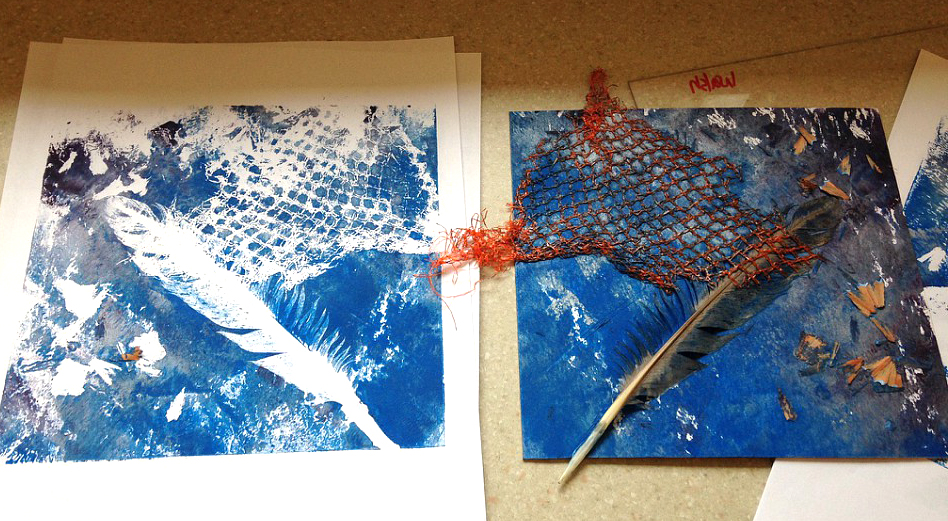 Collograph with Feather and Fabric[/caption]
Last month’s printmaking class didn’t go as I’d planned.
The class was “Printmaking Paradise,” a survey of techniques, taught by Sally and Dick Walsh. In class, Sally taught us a few techniques each day. Some used the printing press, and some we could do at home with no fancy equipment. Sally encouraged us to have fun: to try everything but to go with the techniques we resonated with.
On day one, we tackled collagraphs. They seemed simple enough: spread ink onto a piece of matte board, lay found objects on top, cover with paper, and run the whole thing through the printing press. The first print will be a little sloppy, but the second and third will have more defined features, showing the textures of the objects. Sally’s example had a beautifully detailed feather printed on it.
I waited with eager fingers for my print to roll through the press. Then I peeled it off the board. My feather had printed as a disappointing white blotch: not enough ink. “Make another one!” Dick suggested, so I did, this time gopping on the ink under my feather. You can’t understand the process until you do it, I thought. Why did I expect things to be perfect the first time?
Collograph with Feather and Fabric[/caption]
Last month’s printmaking class didn’t go as I’d planned.
The class was “Printmaking Paradise,” a survey of techniques, taught by Sally and Dick Walsh. In class, Sally taught us a few techniques each day. Some used the printing press, and some we could do at home with no fancy equipment. Sally encouraged us to have fun: to try everything but to go with the techniques we resonated with.
On day one, we tackled collagraphs. They seemed simple enough: spread ink onto a piece of matte board, lay found objects on top, cover with paper, and run the whole thing through the printing press. The first print will be a little sloppy, but the second and third will have more defined features, showing the textures of the objects. Sally’s example had a beautifully detailed feather printed on it.
I waited with eager fingers for my print to roll through the press. Then I peeled it off the board. My feather had printed as a disappointing white blotch: not enough ink. “Make another one!” Dick suggested, so I did, this time gopping on the ink under my feather. You can’t understand the process until you do it, I thought. Why did I expect things to be perfect the first time?
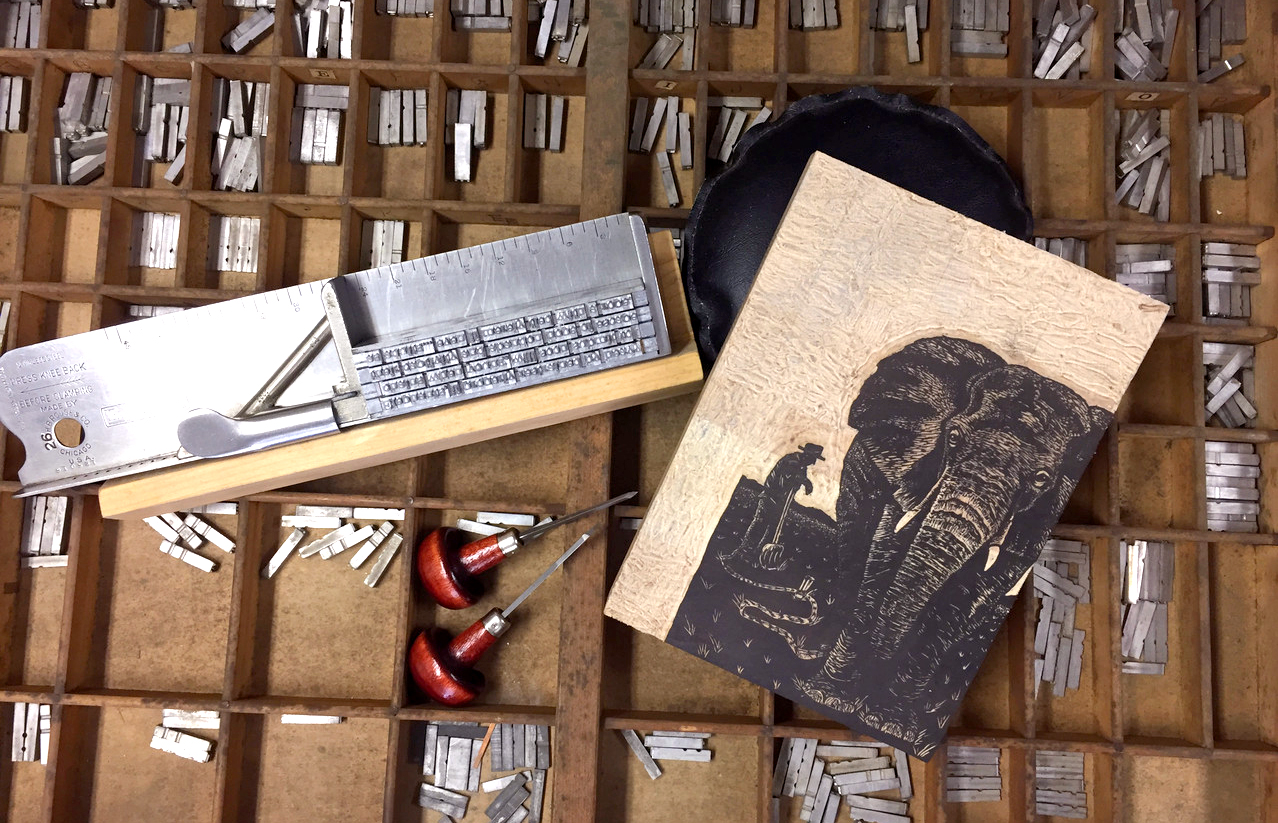
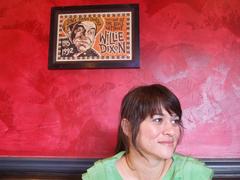 CP: Congratulations on being the very first instructor to teach class in our brand new Book and Paper Arts Studio! So what drew you letterpress printing? Why is the medium meaningful to you?
JW: When I was a printmaking grad student at the University of Iowa, I made drawings and prints that combined images with text. One day, a friend saw me struggle with different methods of printing the text on a lithograph, and he suggested letterpress. He showed me how to set and print one line of text, and I haven't stopped since!
For me, letterpress printing started as and still is a means to an end; I like all types of printmaking, but my love of text always brings me back to letterpress because it's the perfect method to printing my work.
CP: How would you describe your work?
JW: My work tends to be humorous and looks sweetly charming, but there is a philosophical and slightly dark side. I've been told that my work is "what you get if Beatrix Potter crashed into Edward Gorey."
[caption id="attachment_16857" align="aligncenter" width="630"]
CP: Congratulations on being the very first instructor to teach class in our brand new Book and Paper Arts Studio! So what drew you letterpress printing? Why is the medium meaningful to you?
JW: When I was a printmaking grad student at the University of Iowa, I made drawings and prints that combined images with text. One day, a friend saw me struggle with different methods of printing the text on a lithograph, and he suggested letterpress. He showed me how to set and print one line of text, and I haven't stopped since!
For me, letterpress printing started as and still is a means to an end; I like all types of printmaking, but my love of text always brings me back to letterpress because it's the perfect method to printing my work.
CP: How would you describe your work?
JW: My work tends to be humorous and looks sweetly charming, but there is a philosophical and slightly dark side. I've been told that my work is "what you get if Beatrix Potter crashed into Edward Gorey."
[caption id="attachment_16857" align="aligncenter" width="630"]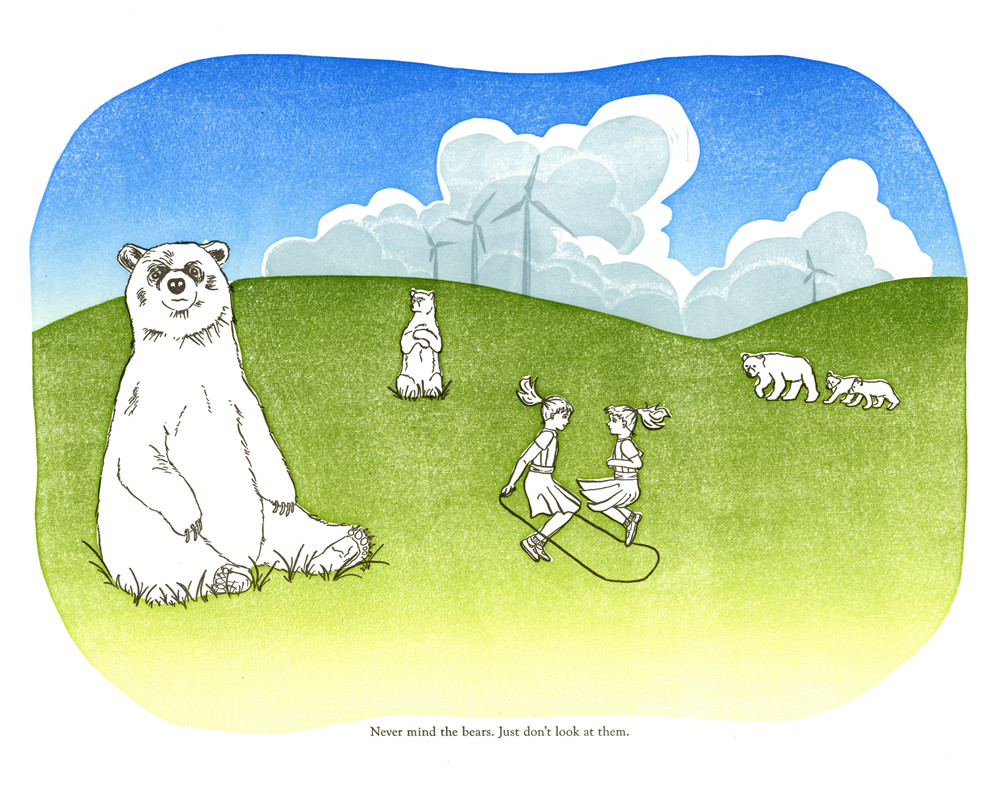 "Never Mind the Bears" letterpress print by Jessica White[/caption]
"Never Mind the Bears" letterpress print by Jessica White[/caption]
...
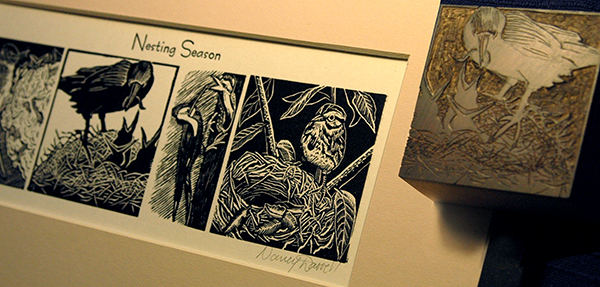 Student print and block project created in Jim Horton's Wood Engraving class at the Folk School[/caption]
I recently talked with instructor Jim Horton about printmaking, wood engraving, his upcoming classes and the new Book and Paper Arts Studio. Jim has been a printmaking/graphic design instructor for 43 years, with special interest in historic graphic tools and processes. His work ranges from job printing and book arts to limited-edition prints. Enjoy our interview!
[caption id="attachment_11904" align="alignright" width="285"]
Student print and block project created in Jim Horton's Wood Engraving class at the Folk School[/caption]
I recently talked with instructor Jim Horton about printmaking, wood engraving, his upcoming classes and the new Book and Paper Arts Studio. Jim has been a printmaking/graphic design instructor for 43 years, with special interest in historic graphic tools and processes. His work ranges from job printing and book arts to limited-edition prints. Enjoy our interview!
[caption id="attachment_11904" align="alignright" width="285"]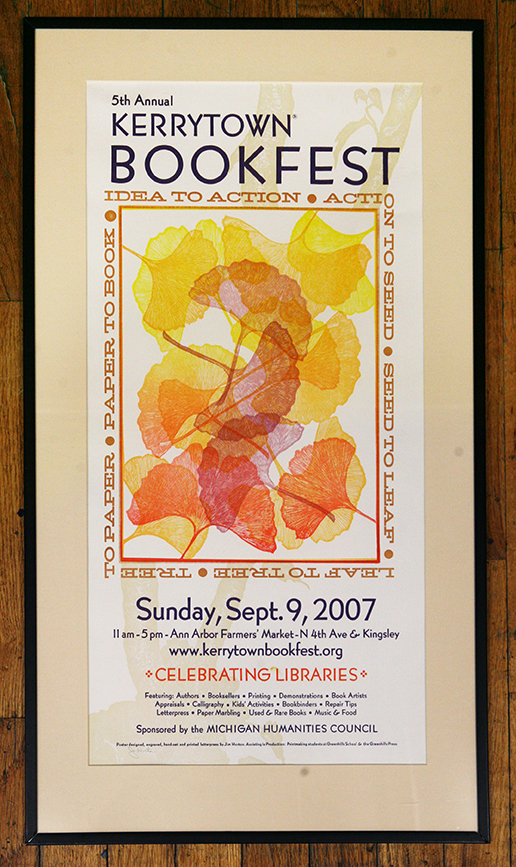 Poster by Jim Horton[/caption]
CP: Where are you from?
JH: I was born in Oklahoma, but lived most of my life in Ann Arbor, Michigan. Midwesterner to the bone, but I sure like to visit the South.
CP: Tell me about your history with printmaking?
JH: My father was a sign painter, the old fashioned kind using a brush and gold leaf. It was an incredible skill. He also did silk screen printing back when the fabric was real silk. He cut stencils by hand. So graphic arts was always highly respected on our family culture. Making woodblock prints was way cool. As a college student in art school, naturally, I gravitated to the printmaking studio. I was at home there. I loved the industriousness of proofing an edition of prints on fine paper.
CP: What do you do when you are not in Brasstown?
JH: I was an art teacher, and at every level, teaching graphic design, studio art.. all mediums. That and always printing. A few years back I deeply got into letterpress and engraving. I live in a rural area, and love working outdoors, walking and doing yoga. I still love to draw too. I go over to the local universities and draw from life (models).
[caption id="attachment_11906" align="aligncenter" width="480"]
Poster by Jim Horton[/caption]
CP: Where are you from?
JH: I was born in Oklahoma, but lived most of my life in Ann Arbor, Michigan. Midwesterner to the bone, but I sure like to visit the South.
CP: Tell me about your history with printmaking?
JH: My father was a sign painter, the old fashioned kind using a brush and gold leaf. It was an incredible skill. He also did silk screen printing back when the fabric was real silk. He cut stencils by hand. So graphic arts was always highly respected on our family culture. Making woodblock prints was way cool. As a college student in art school, naturally, I gravitated to the printmaking studio. I was at home there. I loved the industriousness of proofing an edition of prints on fine paper.
CP: What do you do when you are not in Brasstown?
JH: I was an art teacher, and at every level, teaching graphic design, studio art.. all mediums. That and always printing. A few years back I deeply got into letterpress and engraving. I live in a rural area, and love working outdoors, walking and doing yoga. I still love to draw too. I go over to the local universities and draw from life (models).
[caption id="attachment_11906" align="aligncenter" width="480"]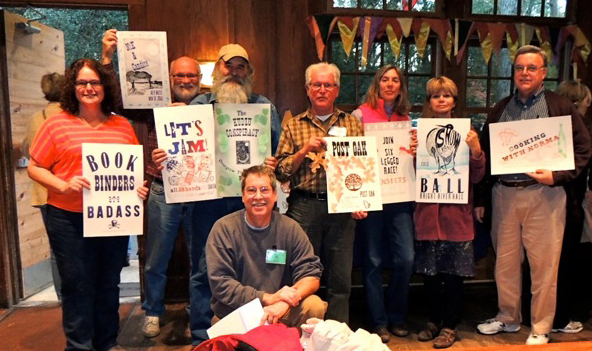 Class photo and projects from Jim's class: "The Art of the Great American Poster"[/caption]
CP: How long have you been coming to/teaching at the Folk School?
JH: I want to say about seven years. Dea Sasso got me here, and she was right. People like the Pattersons, we can only get down here in these hills.
[caption id="attachment_11910" align="alignright" width="480"]
Class photo and projects from Jim's class: "The Art of the Great American Poster"[/caption]
CP: How long have you been coming to/teaching at the Folk School?
JH: I want to say about seven years. Dea Sasso got me here, and she was right. People like the Pattersons, we can only get down here in these hills.
[caption id="attachment_11910" align="alignright" width="480"]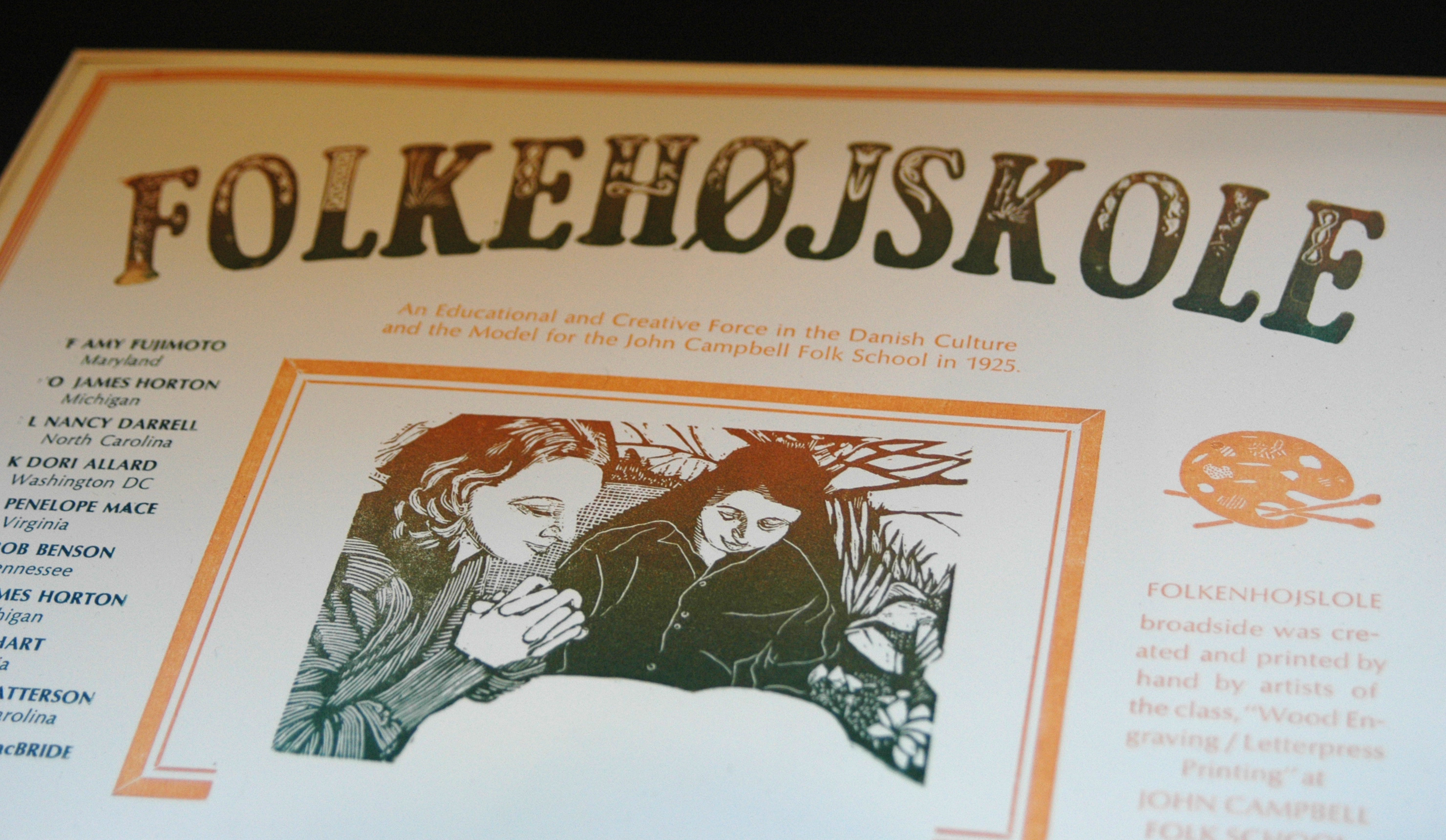 Folkehøjskole print by Jim Horton and illustrations by Nancy Darrell[/caption]
CP: What are projects are you working on currently? Where do you draw inspirations from?
JH: I am illustrating and printing a book of traditional folk songs. I love cowboy songs...why? I don't know. I also love old gospel, though I am not the least bit religious in a doctrinal sense.
Folkehøjskole print by Jim Horton and illustrations by Nancy Darrell[/caption]
CP: What are projects are you working on currently? Where do you draw inspirations from?
JH: I am illustrating and printing a book of traditional folk songs. I love cowboy songs...why? I don't know. I also love old gospel, though I am not the least bit religious in a doctrinal sense.


